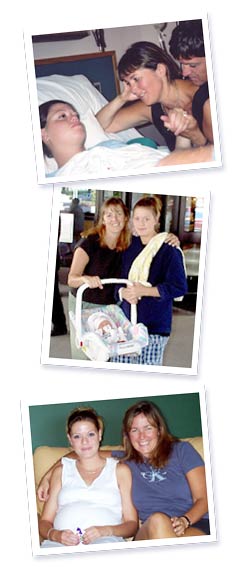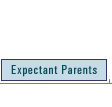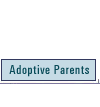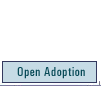|
|
 |
 |

What is open adoption? It reminds me of a marriage. When 2 people marry, they are joining with each other and they are joining their families through their marriage. A child joins the adoptive family with the birth family. It is then up to the adults in this relationship to maintain the relationship with one another. The child is too young and powerless to do this. So the adoptive and birth parents make a commitment to one another so the child will be able to have connections with all members of his families. Like all families, the kind of relationship members of the family have with one another varies. Sometimes, you have a very close relationship with one another. You visit each others' homes, attend family functions, attend birthday parties, Christmas celebrations, inform each other of any significant change in your life. They recognize each other's birthdays, give gifts to one another at Xmas. This kind of open adoption relationship is considered an extended family relationship. Members of a friendship open adoption relationship spend time getting to know one another, get together with one another, visit each other's homes, keep in touch by phone and email. They may or may not recognize each other's birthdays, give gifts at Xmas. Usually, they are not included in family gatherings. (Xmas dinner) There is also an acquaintance open adoption relationship. People keep in contact with one another but it is usually through email and phone, letter. They may get together once a year. Of course, like all kinds of relationships, open adoption relationships change over time. Sometimes the relationship feels like an extended family and sometimes like an acquaintance. Relationships need flexibility in order to survive. However, all recognize that they are family to one another and each person is important to the child. Do all birthparents
want an open adoption? Are open adoptions
legally binding? However, many birth and adoptive parents discuss the kind of relationship they want to have with one another now and in the future. Some like to write down these thoughts into an open adoption agreement. These agreements are reminders of their intent rather than a legally binding document that locks people into a certain way of interacting with one another. When relationships become obligations, anger and resistance develops. However, it is always a good idea to have a plan. Although plans can be changed, they give everyone an idea where they are headed. What are the benefits
of open adoption? What kind of problems
occurs in open adoption relationships? What is a birthparent's
role in a child's life? So what is a birthparent's role? It is important
to look at the child's needs when establishing your role in the
child's life. A child needs someone who is reliable. A child needs
someone who makes promises and keeps them. A child needs someone
who respects his/her adoptive parents. A child needs someone who
remembers birthdays, holidays and other special occasions. A child
needs someone who can tell them about his birth and family history.
A child needs someone who is interested in his thoughts and deeds.
A child needs their birthparents to love them and to just be there
for them. |
 |







